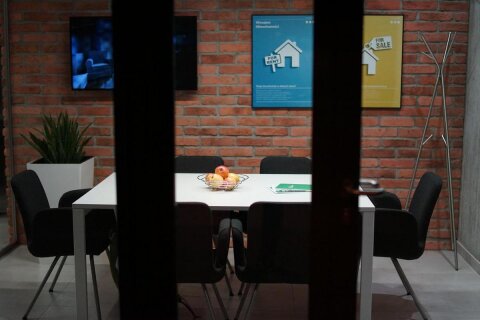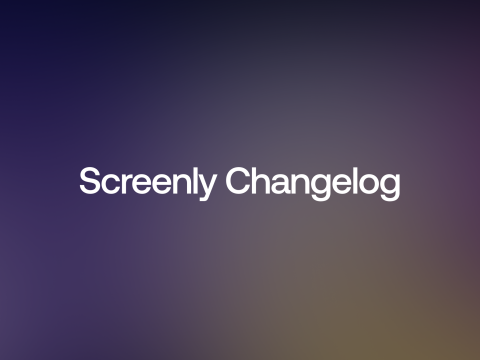Managing digital content at scale is difficult. This statement is true both in terms of managing content on a website and managing content on a digital sign. In the past, online content was often commingled with code, and it was difficult to deploy and manage content across multiple digital touchpoints. Every time a team member wanted to edit content, they would have to also edit the code base, and they would have to do so everywhere they wanted this content to display.
Likewise, it was difficult in the past to manage digital signage content across multiple digital screens. Screen content management in the past involved physically visiting each screen, one by one, and updating content manually with a USB drive and keyboard.
To combat these similar problems, businesses started using headless content management (CMS) systems. In the article below, we’ll cover the difference between traditional CMS and headless CMS systems. We’ll discuss traditional CMS systems in digital signage, and we’ll cover how Screenly brought the concept of headless CMS systems to the digital signage industry.
Additionally, we will discuss the future of headless CMS systems in digital signage and how this new frontier can benefit your business. Edge Apps, the next generation of headless CMS systems for digital signage, allow developers to quickly build and deploy custom digital signage apps at scale.
The difference between headless CMS and traditional CMS systems
A content management system is exactly what it says it is—software to manage your content. Content management systems allow multiple parties to draft, edit, and publish content as a team. However, there are, of course, many ways to manage content, and some are better than others.
Traditional CMS systems typically build content for just a single web page or digital instance. Often, this content is tangled in HTML and CSS, and the content only lives on that one web page.
Headless CMS systems store content in a way where the content can be used multiple times on different pages or digital instances. This content lives outside of the code for one page, and it is instead injected from the main content repository to wherever the user wants the content to show. With the content existing separately from each display instance, it can be easily integrated into new pages and use cases.
Bringing content management systems to digital signage
In the past, digital signage content management was a very manual and physically involved task. Often, businesses would change out content on screens one by one by putting in a new USB drive or DVD into the screen’s media player. This task became increasingly difficult when businesses had multiple locations. An employee would have to travel to each screen whenever there was a content change request, and there was also limited visibility on if a screen malfunctioned.
Businesses like Screenly made it easier for companies to deploy content on their digital signs with a cloud-based CMS. With Screenly, users can upload content to their online account and deploy it to one or multiple screens remotely, from anywhere with an internet connection, via a web interface.
Key features of a traditional CMS for digital signage
A user interface for cloud-hosted content and managing multiple digital signs at once can be thought of as a traditional CMS system for digital signage content.
To get started using a digital signage content management system, users first upload images or video content that they want to display. After users upload content to their content library, they can then organize this content into playlists, and the user can then assign playlists to one or multiple screens.
The playlist then acts as a reusable building block of content that can be federated out to one or more screens. That same playlist, when edited, results in content on multiple screens being updated as well. These edits can include added or removed content, and they can also include edits such as transitions, display priority settings, or scheduling.
Being able to share a playlist across multiple screens becomes increasingly important as a digital signage deployment grows. If a business has only three digital signs, it may be unpleasant but not a big deal to update the content on each screen manually. However, if a business has a deployment of three dozen screens or three hundred screens, it is imperative that the business can update content on multiple screens at the same time.
Moving to a headless CMS for digital signage with APIs
The digital signage CMS described above is certainly an improvement over manually updating content on each screen, but it has important limitations.
The above-listed digital signage CMS is best described as a traditional CMS. While it has components of a headless CMS, such as being able to federate content across multiple digital instances through playlists, the content itself and the content scheduling is not an easily adjustable or editable building block.
A key limitation with traditional digital signage CMS systems is that content is limited in its customization and integration with outside data sources. Users can upload photo and video content, but that content must be built manually and scheduled manually as well. The content production and scheduling cannot occur programmatically or incorporate input from other data sources, such as weather data or business inventory data.
Enter Screenly’s digital signage API. With our API, digital signage users bring in data from third-party data sources or their existing tech stack and business systems with ease. This data can be used to select which content displays and when it is displayed. Importantly, these selections can occur instantly across hundreds of screens, without manual intervention from team members.
How Edge Apps bring the next generation of headless CMS digital signage
Using cloud-hosted content, feeding in data via API, and federating it across multiple screens is one version of a headless CMS for digital signage. However, this concept is expanded further with Edge Apps.
Screenly Edge Apps launched in 2023, and it is a solution for developers to build and deploy custom digital signage apps quickly and easily. Edge Apps allow users to move beyond federating only content across multiple screens and into also being able to federate custom applications across multiple screens.
These content applications can do whatever the developer wants them to do. Custom digital signage apps may integrate with and use data from existing business databases, such as inventory or billing systems. Additionally, the application can use data that is local to the digital signage hardware, such as location or connectivity data.
The central concept behind Edge Apps is that they leave the transactional and presentation layer of what a digital sign displays entirely up to the end user and developer. The transactional and presentation layers are entirely customizable. What Edge Apps take care of is all the dirty work that is required to get a digital signage content management system up and running. Developers can focus on the parts of their app that truly drive business value, and they can leave thorny issues such as security, device management, and content rendering to Screenly.
Additional features of Edge Apps and why they are important
In addition to providing a digital signage headless CMS system that goes beyond content and into custom applications, Edge Apps have several other key features.
First, it is important to highlight that Edge Apps do not require hosting. The entire application runs directly on digital signage hardware. This design removes a single point of failure from a hosting setup, and it also allows applications to run with much faster load times than cloud-hosted apps. Instead of thinking of load times in seconds, you can think of load times in milliseconds.
Second, Edge Apps is a product built by developers for developers. Screenly provides a modern workflow with a command-line interface (CLI). This way, developers can build, test, and push apps as they are used to in typical development environments. Additionally, developers can easily integrate Edge App build workflows into their CI/CD pipelines.
Lastly, beyond being able to integrate with existing business systems and databases, Edge Apps can integrate with peripheral hardware. This hardware can include sensors, switches, buttons, or even more complex devices like a POS device.
How to get started with a headless CMS system for digital signage
Getting started with Screenly is easy. We want users to have a seamless experience from the start and get their content on a digital screen as efficiently as possible.
The first step is to register for a Screenly free trial. It’s a 14-day free trial, and we do not require a credit card to sign up. You can check out the Screenly platform, add content, organize playlists, and assign playlists to your screens. If you don’t have a digital signage player, you can launch a virtual screen and display content on your web browser.
You can also get started on building your first Edge App. Check out the developer documentation at the link here and play around with existing apps on the Edge App playground on GitHub.
Questions? Reach out to Screenly Support. Get your own digital signage up and running with Screenly at the link here.





